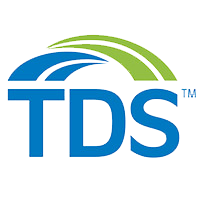Tips to protect files from ransomware attacks
TDS Telecom (TDS®) advises its customers to protect their computers and files from all cyberattacks, especially following two recent ransomware attacks, Petya and WannaCry.
Late June, “Petya” originated in the Ukraine and spread to at least 65 countries. The attack spread rapidly through networks that use Microsoft Windows. It was similar to last month’s ransomware attack, WannaCry ransomware. This attack affected thousands of computers in more than 150 countries. Due to the number of companies and individuals hit by this attack, many companies were forced to temporarily shut down.
How ransomware works: a criminal takes over your computer. They encrypt your files and give you instructions to retrieve them. Usually, you have two choices. You can pay the money or send the ransomware link to friends (in hopes they fall for the scam). If they pay the ransom, your files get decrypted, typically for free — but at the cost of your friends.
Ransomware is not the only type of cyberattack that affects one’s computer or files. Other forms include malware and phishing.
“It’s this variety of attacks that makes it so necessary for consumers and businesses to secure their computer,” says Kevin Hess, executive vice president at TDS. “No one wants to become the next cyber victim. Just as ransomware has become effective and lucrative for criminals, it has become extremely costly to the innocent victims. Consumers must be cautious.”
To help, TDS offers customers four tips to ward off becoming a cyber victim:
- Keep your computer updated. Ensure your computer is always up-to-date; especially the computer’s operating system. The best way to do this is to set your computer to auto update (Instructions for Mac, instructions for Windows). Note: The Windows vulnerability that let WannaCry in had been patched months earlier—but many organizations and individuals hadn’t updated their systems.
- Back up your files remotely or externally. Back them up to the cloud or an external hard drive. It never hurts to have a second copy of your files. Plus, should you become victim of a ransomware attack, your computer breaks or is stolen, you’ll have access to all your files without missing a beat.
- Don’t open unknown or suspicious email attachments. If the sender is unfamiliar to you — don’t click to open a link or attached file. Even if you know the sender, if the attachment or link seems odd or is unexpected — think twice before clicking. Ransomware is most prevalent in PDF files or Microsoft Office documents so be aware when opening all attachments.
- Update antivirus software. One of the best ways to avoid viruses, ransomware, spam, and other rapidly evolving forms of malware is to run up-to-date antivirus protections.
“Proactively following these steps will add layers of protection for your computer and your files,” according to Hess.


